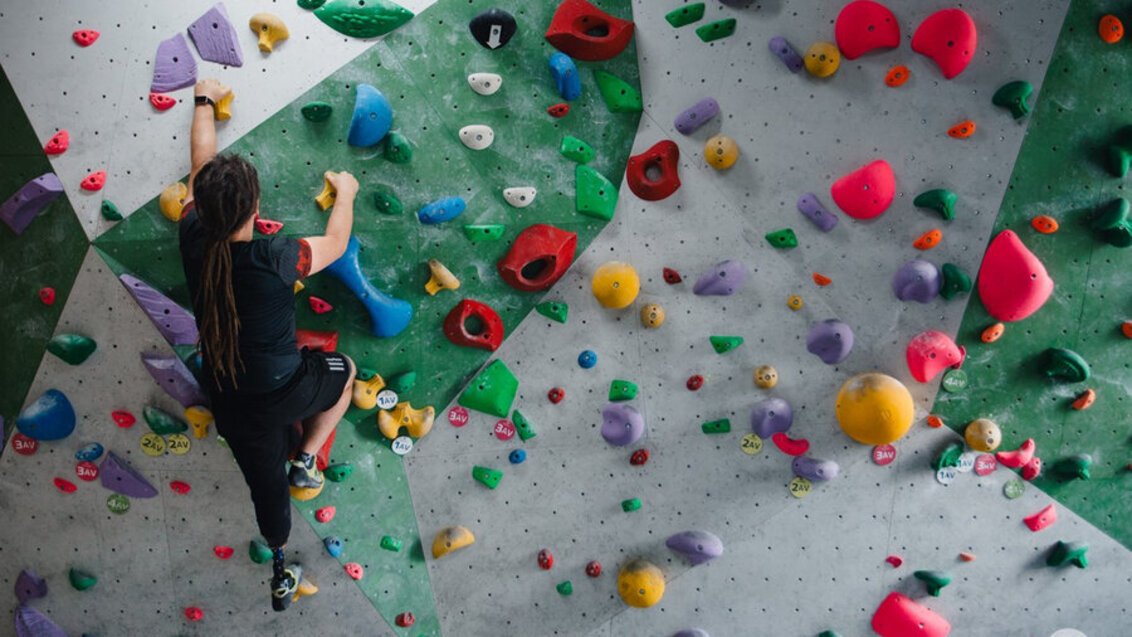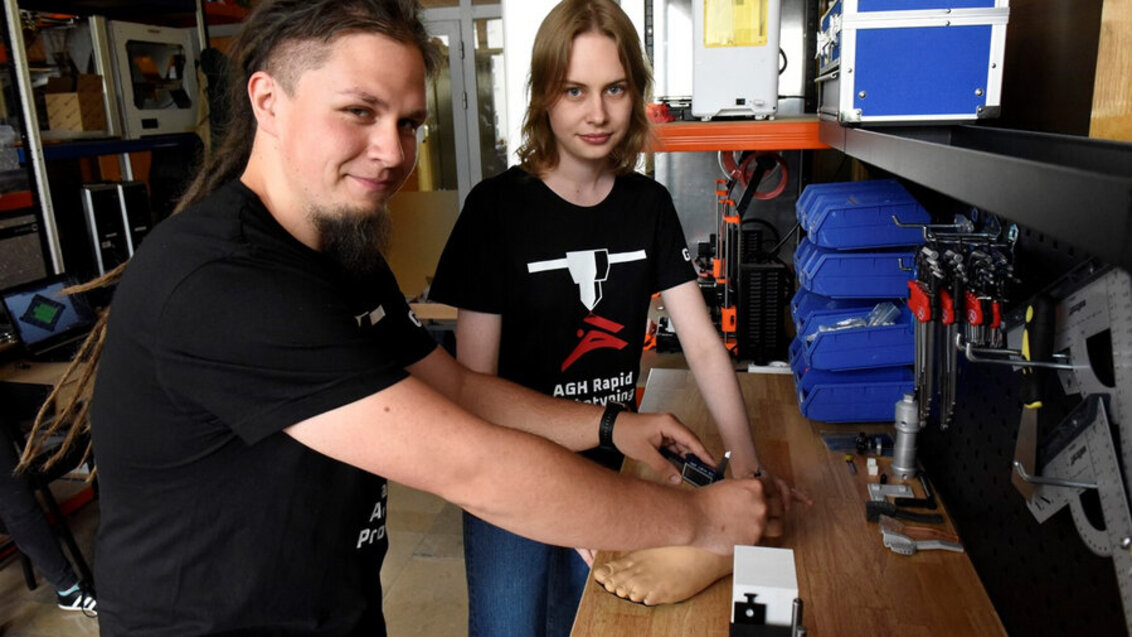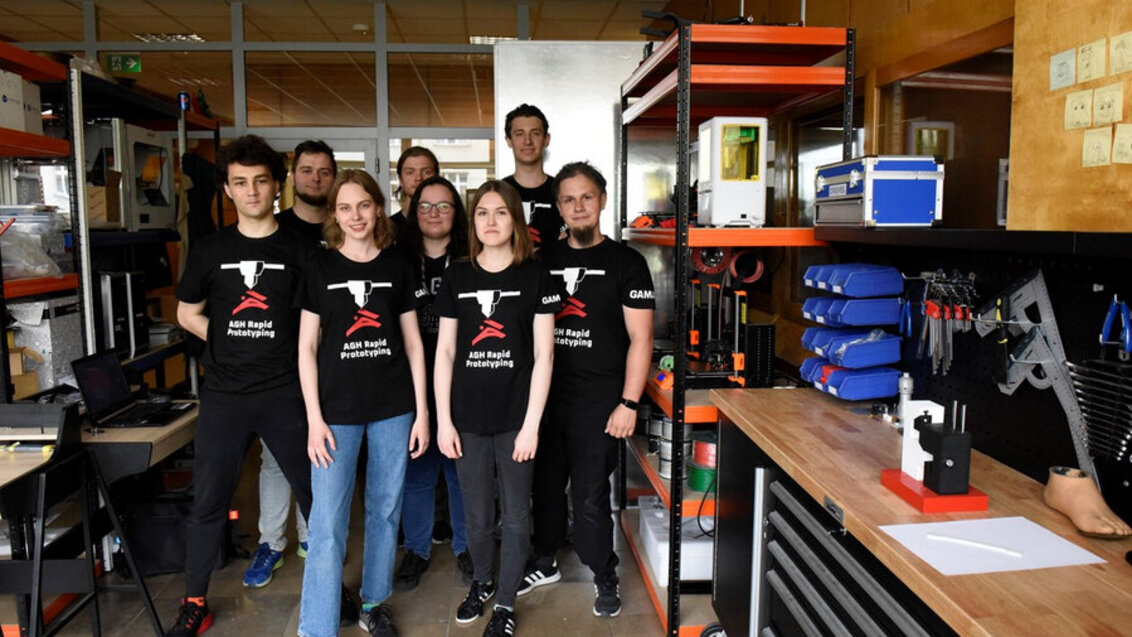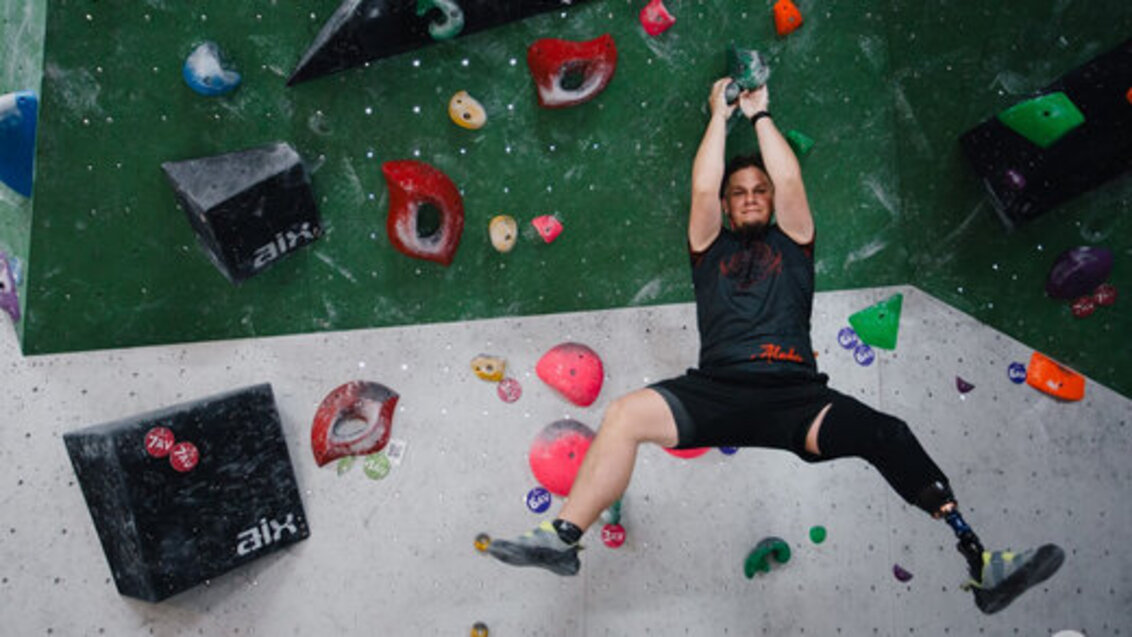
Kamil Warchoł, an AGH UST student, uses a tailor-made prosthesis, which unfortunately, doesn’t allow him to climb. Photo: Maciej Talar, KSAF AGH
AGH UST students develop a personalised foot prosthesis for indoor climbing. The solution under development is to answer the needs of Kamil Warchoł, an AGH UST student who, as a result of foot amputation, uses a tailor-made prosthesis, which doesn’t allow him to pursue his favourite sport.
The AGH Rapid Prototyping Student Research Club, established at the Faculty of Mechanical Engineering and Robotics, which deals with designing and prototyping incremental innovations, this time has taken up the challenge of developing a personalised foot prosthesis for a fellow student. To begin with, students will examine the pros and cons of selected materials that can be used to create a prosthesis. Additionally, they will analyse the strain field distribution and determine the spots that are the most vulnerable to deformation on both an able-bodied person’s foot and the prosthetic foot during indoor climbing. As a result, they plan to create a model of a 3D-printed prosthetic foot. The results of the project will certainly be useful to designers and creators of personalised prosthetic equipment. A long-term objective of the project is to create a foot prosthesis with better mechanical parameters that will be easy to put on and manufacture.
Using 3D scanning and printing, the results of the project can become an innovative solution for prosthetics. Photo: Zbigniew Sulima

AGH UST students develop a personalised foot prosthesis for indoor climbing. Photo: Zbigniew Sulima

Kamil Warchoł, AGH UST. Photo: Maciej Talar, KSAF AGH

 Three AGH University student projects with KOKOS awards
Three AGH University student projects with KOKOS awards  AGH University mathematician: I look for beauty in graphs
AGH University mathematician: I look for beauty in graphs  Krakow hosts the 15th European Symposium on Computational Intelligence and Mathematics
Krakow hosts the 15th European Symposium on Computational Intelligence and Mathematics  START scholarship for two young AGH University researchers
START scholarship for two young AGH University researchers  Main Library’s Agnieszka Podrazik as a Promoter of Education about Standardization
Main Library’s Agnieszka Podrazik as a Promoter of Education about Standardization  CYFRONET Centre’s Helios third in the Green500 list
CYFRONET Centre’s Helios third in the Green500 list